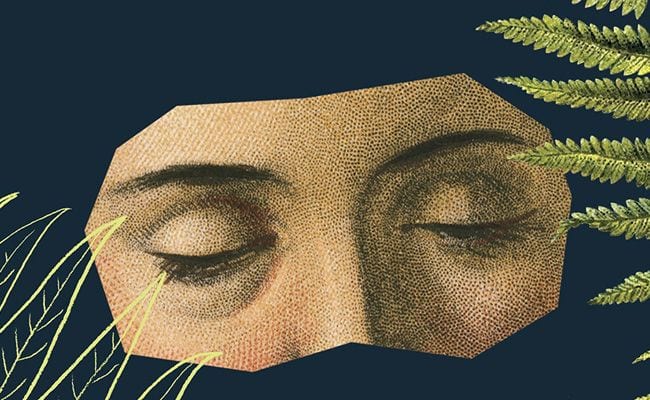
A couple of years ago, I participated in a Mental First Aid training in Atlanta, and it really opened my eyes. One of the group exercises involved a volunteer standing in the middle of the room and trying to read a script, while people stood on either side of him, talking directly into his ears through a piece of paper folded into a tube. It was immediately obvious how discomforting it was for the guy in the middle, and as the other volunteers spoke into his ears with all sorts of gibberish, you could tell that he was not able to concentrate on what he was saying. He was getting increasingly flustered, and looked panicked and desperate.
The moderator quickly stepped in and ended the activity, but not before telling us that this situation was what schizophrenics dealt with every day. They heard voices around them, but since their reality was not that of others, they were labelled “crazy” and “unfit for society”.
I thought about that day – and many other experiences I’d had with mental illness – as I read Tod Wodicka’s second novel, The Household Spirit. This is a strange book; it is dark humor in the vein of Peter Benchley, Kurt Vonnegut, and John Irving. It’s also an account of dysfunctional families that leaves little room for laughter, but more for tears. This is the kind of book Erma Bombeck would have written … if she was on heroin or had just watched The Grave of the Fireflies and Up on repeat while listening to Jeff Buckley. There’s that much sadness and sheer mental destruction in this book.
Of course, what makes this all so strange, is that the story starts as a comedy, albeit one set off of Route 29 in rural Queens Falls, New York, and centers on two families, the Phanes and the Jeffries, who are neighbors with almost zero interaction over decades. In one house we see Howard “Howie” Jeffries, a 50-something divorcee with what his ex-wife had called “the last face on earth”, who spends his days working at the General Electric Waste Water Treatment Plant in Schenectady, and daydreams about fish and fishing. He’s totally uncool and musically challenged; he learns this the hard way when he takes his teenage, goth daughter to see “the Maroon 5” because he thought that’s what young kids liked. Later in the story he’s given a surprise party after 30 years on the job. This leave him paralyzed with worry, “it was like going to sleep in Montana and waking up in MTV.” He is just an average guy with a lack of interest in just about everything.
Yet he takes an interest in his neighbor, the crazy orphan Emily Phane, a woman whom he has seen grown up, but only from a distance, because he just kept to himself, and so did she, as life is apparently very solitary up on Route 29. Emily, whose mother and grandmother died in a car accident when she is young, is raised by her grandfather, but when his health takes a turn for the worse, her already fragile mental state nosedives. When Howie and Emily’s lives come together, each is forever changed. According to Wodicka, “The simplicity of Mr. Jeffries’s strangeness was almost ideally suited to Emily’s internal and external disconnection. Their paralyses fit.”
I don’t know anything about Tod Wodicka, but he must have experienced something like this first-hand or studied sleep diseases in depth because his descriptions of Emily’s mental state, and her thought processes, are nothing short of terrifying. This may be the best depiction of night terrors and sleep paralysis I’ve ever read. Both conditions go way beyond sleepwalking, which often gets humorously depicted a la Mike Birbiglia. Writes Wodicka:
The so-called sleep paralysis attacks, which had been occasional … because acute on her return to Queens Falls. They fell on her with a vengeance … First, the normal horrors just intensified. Her head in a vise of screaming; footsteps that scrambled rather than walked. The feeling of a hand reaching out and grabbing her neck and then: awake and alone and oh my God no. Her old room. Empty, of course, but vibrating differently, like a screen of a computer about to crash.
With all that said, however, The Household Spirit is still about 100 pages too long, and is so chaotic and filled with redundancies and sub-plots as to almost be too difficult to read. That’s a damn shame, really, because Wodicka is a solid writer with a gift for chuckle-inducing depictions of the life and people in the rural Northeast. It’s impossible not to laugh out loud, for example, when Howie visits a grocery store and ponders over Vermonters that “resembled upstate New Yorkers crossbred with golden retrievers”, or when Howie’s daughter, Harri, talks about her older boyfriend who teaches art at Adirondack Community College, “which is like being an abortion professor at Brigham Young University.”
Ultimately, The Household Spirit is a good story, but one that will likely only be appreciated by people already familiar with Wodicka’s work, or others with a specific interest in family dynamics and/or mental illnesses. This is the kind of book that only the most dedicated of readers will be able to finish because the really good stuff has to be clawed out, and the act of reading itself takes persistence and commitment.


![Call for Papers: All Things Reconsidered [MUSIC] May-August 2024](https://www.popmatters.com/wp-content/uploads/2024/04/all-things-reconsidered-call-music-may-2024-720x380.jpg)



